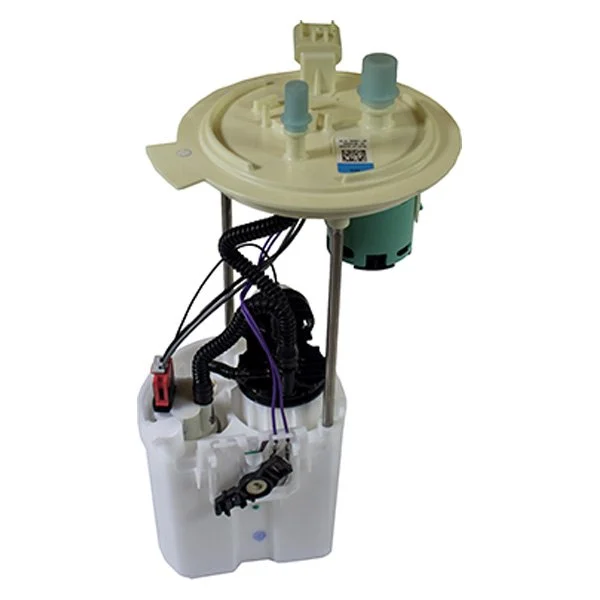The 2014 Dodge Ram 3500 Fuel Filter is a heavy-duty pickup truck known for its robust performance and towing capabilities. A crucial component in maintaining its engine’s health and performance is the fuel filter. This guide provides a comprehensive overview of the fuel filter in your 2014 Dodge Ram 3500, covering its function, types, replacement process, and maintenance tips.
Function of the Fuel Filter
The fuel filter’s primary role is to remove contaminants from the fuel before it reaches the engine. These contaminants can include dirt, rust, debris, and even water. By preventing these particles from entering the engine, the fuel filter helps to:
- Protect fuel injectors: Clean fuel ensures proper fuel injector function, preventing clogs and maintaining optimal spray patterns for efficient combustion.
- Prevent engine wear: Contaminants can cause excessive wear and tear on engine components, leading to reduced performance and premature failure.
- Maintain fuel efficiency: A clean fuel filter allows for optimal fuel flow, ensuring efficient combustion and preventing fuel wastage.
Types of Fuel Filters for 2014 Dodge Ram 3500
The 2014 Dodge Ram 3500, especially those with the Cummins diesel engine, typically utilizes two fuel filters:
- Primary Fuel Filter: This filter is usually located closer to the fuel tank and is responsible for removing larger particles and debris.
- Secondary Fuel Filter: This filter is located closer to the engine and is designed to capture finer particles that may have passed through the primary filter. It often incorporates a water separator to remove any water from the fuel.
Fuel Filter Replacement
Replacing the fuel filter(s) is a crucial maintenance task that should be performed regularly. The recommended replacement interval varies depending on driving conditions and fuel quality, but it is generally recommended to replace them every 15,000 to 30,000 miles.
Tools and Materials:
- New fuel filter(s)
- Wrench or socket set
- Fuel filter wrench (if applicable)
- Drain pan
- Gloves
- Safety glasses
Replacement Steps:
- Locate the fuel filter(s): Consult your owner’s manual for the exact location of the fuel filter(s) in your 2014 Dodge Ram 3500.
- Relieve fuel pressure: Carefully loosen the fuel cap to release any pressure in the fuel system.
- Disconnect fuel lines: Disconnect the fuel lines from the fuel filter(s). Be prepared for some fuel to spill, so have a drain pan ready.
- Remove the old filter(s): Use a wrench or fuel filter wrench to remove the old fuel filter(s).
- Install the new filter(s): Install the new fuel filter(s) in the reverse order of removal. Make sure to lubricate the filter’s gasket with clean engine oil before installation.
- Reconnect fuel lines: Reconnect the fuel lines securely.
- Prime the fuel system: If your truck has a manual fuel pump, prime the system according to the owner’s manual instructions. Otherwise, turn the ignition key to the “on” position for a few seconds to allow the electric fuel pump to prime the system.
- Start the engine: Start the engine and check for any fuel leaks.
Note: If you are not comfortable performing this task yourself, it is always best to take your truck to a qualified mechanic for fuel filter replacement.
Maintenance Tips
- Use high-quality fuel: Using high-quality fuel from reputable sources can help to reduce the amount of contaminants in the fuel system and prolong the life of the fuel filter.
- Regularly inspect the fuel filter: Periodically inspect the fuel filter(s) for any signs of damage or leaks.
- Keep fuel tank full: Keeping the fuel tank full can help to prevent condensation from forming inside the tank, which can lead to rust and contamination.
- Follow recommended maintenance schedule: Adhere to the recommended maintenance schedule outlined in your owner’s manual for fuel filter replacement and other essential services.
Conclusion
The fuel filter is a vital component in your 2014 Dodge Ram 3500, ensuring clean fuel delivery to the engine and protecting it from harmful contaminants. Also read it
Regular fuel filter replacement and proper maintenance are essential for maintaining your truck’s performance, fuel efficiency, and longevity. By understanding the function of the fuel filter, the different types available, and the replacement process, you can take proactive steps to keep your 2014 Dodge Ram 3500 running smoothly for years to come.
2014 Dodge Ram 3500 Fuel Filter FAQs
Here are some frequently asked questions about the fuel filter in a 2014 Dodge Ram 3500:
General Fuel Filter Questions:
-
What is the purpose of a fuel filter? A fuel filter’s job is to remove contaminants like dirt, rust, debris, and even water from the fuel before it reaches your engine. This protects the fuel injectors and other engine components from damage.
-
Why is it important to change my fuel filter? A clogged fuel filter restricts fuel flow, which can lead to poor engine performance, reduced fuel economy, and even engine damage. Regular replacement prevents these issues.
-
How often should I change my fuel filter? The recommended interval varies, but generally, it’s between 15,000 and 30,000 miles. Consult your owner’s manual for the specific recommendation for your 2014 Ram 3500. If you frequently drive in dusty or harsh conditions, you may need to change it more often.
-
What happens if I don’t change my fuel filter? Ignoring fuel filter changes can lead to:
- Reduced engine performance: You might experience decreased power and acceleration.
- Poor fuel economy: Your truck may use more fuel than usual.
- Engine damage: Contaminants can damage fuel injectors, fuel pumps, and other engine components.
- Stalling or misfires: A severely clogged filter can disrupt fuel flow, causing these issues.
-
Can I change the fuel filter myself? Yes, you can, if you have the necessary tools and are comfortable working on your vehicle. However, if you’re unsure, it’s always best to have a qualified mechanic do it.
2014 Dodge Ram 3500 Specific Questions:
-
How many fuel filters does a 2014 Dodge Ram 3500 have? Most 2014 Ram 3500s, especially those with the Cummins diesel engine, have two fuel filters: a primary filter (closer to the fuel tank) and a secondary filter (closer to the engine). The secondary filter often incorporates a water separator.
-
Where are the fuel filters located on a 2014 Ram 3500? Consult your owner’s manual for the precise location of the fuel filters on your specific model. The primary filter is often near the fuel tank, and the secondary filter is typically located near the engine.
-
What kind of fuel filters do I need for my 2014 Ram 3500? Use the correct replacement filters specified for your truck. Your local auto parts store can help you find the right ones based on your truck’s engine and model year. Using incorrect filters can cause problems.
-
How do I prime the fuel system after changing the fuel filter on my 2014 Ram 3500? If your truck has a manual fuel pump, follow the instructions in your owner’s manual. Many newer models have an electric fuel pump. For these, turning the ignition key to the “on” position (without starting the engine) for a few seconds will usually prime the system.
-
Are there any special considerations for changing the fuel filter on a diesel Ram 3500? Yes, diesel fuel systems can be more sensitive to air in the lines. Proper priming is crucial after a filter change. Also, ensure the water separator (if present) is properly drained and reassembled.
-
Can I use a fuel filter from a different year Ram 3500 on my 2014 model? It’s generally not recommended. Fuel filters are designed to meet specific requirements, and using the wrong one could affect performance or even cause damage. Always use the correct filter for your model year.
-
How much does it cost to replace the fuel filter on a 2014 Ram 3500? The cost will vary depending on whether you do it yourself or have a mechanic do it. DIY will cost the price of the filters. A mechanic will charge for labor in addition to the cost of the filters. Call local mechanics for estimates.
-
What are the signs that my fuel filter needs changing? Common signs include:
- Difficulty starting the engine
- Reduced engine power or acceleration
- Poor fuel economy
- Stalling or misfires
- Rough idling
- Unusual noises from the fuel pump



